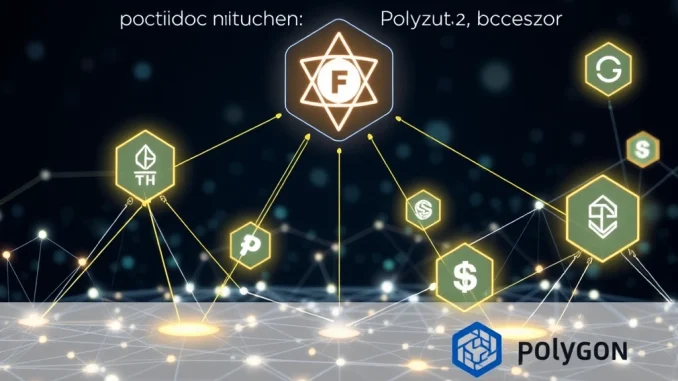
Big news in the blockchain space! Polygon, a leading platform for scaling Ethereum, has teamed up with GSR, a prominent global crypto market maker, to introduce something significant for the world of decentralized finance (DeFi). They’ve officially launched the private mainnet of the **Katana Network**, a brand-new **DeFi**-focused **Layer 2** blockchain.
What is the Katana Network and Why Does it Matter?
The **Katana Network** is designed with a specific mission: to tackle the persistent problem of fragmented liquidity across the **DeFi** landscape. Built on **Polygon**’s innovative AggLayer technology, Katana aims to create a more unified and efficient environment for users and protocols.
Think of the current DeFi market like a city with many separate banks and exchanges, each holding their own pool of money. Moving assets between them can be slow and costly. Katana wants to connect these institutions, making it easier and cheaper for money to flow where it’s needed most. By integrating with major **DeFi** platforms like Sushi and Morpho, Katana will support a range of activities including:
- Lending and borrowing
- Asset trading
- Advanced yield strategies
This unification is crucial for the growth and accessibility of **DeFi**, potentially leading to better prices, lower fees, and more opportunities for users.
Who is Behind Katana? Polygon and GSR Lead the Way
This initiative is a joint effort between two key players in the crypto ecosystem. **Polygon** provides the foundational technology with its AggLayer, which is designed to create a seamless, interconnected network of blockchains. **GSR**, known for its expertise in market making and digital asset trading, is playing a critical role by supplying initial liquidity to the **Katana Network**. This initial capital is vital for ensuring the network has sufficient funds to support trading and lending activities from day one.
Getting Involved: The Pre-Deposit Phase and What’s Next
Currently, the **Katana Network** is in its private mainnet phase, allowing select partners and early participants to begin using the platform. For those eager to get in early, a pre-deposit phase is open. This allows users to stake popular assets like ETH, USDC, USDT, and WBTC. Participating in this phase offers a chance to earn future KAT tokens, the native token of the Katana Network, likely through an airdrop or similar distribution mechanism.
The public mainnet launch is highly anticipated and is expected to go live by the end of June, according to reports from CoinDesk. This will open the doors for a wider range of users to access Katana’s features and contribute to its liquidity pools.
Why a New Layer 2? The Need for Efficiency
While the **DeFi** space has grown dramatically, it still faces challenges related to scalability, cost, and liquidity fragmentation. Building a dedicated **Layer 2** like Katana on top of **Polygon**’s infrastructure allows for faster and cheaper transactions compared to operating directly on the Ethereum mainnet, while still benefiting from Ethereum’s security. The focus on **DeFi** from the ground up means Katana can be optimized specifically for financial applications, aiming for better performance and user experience.
Conclusion: A Step Towards Unified DeFi
The launch of the **Katana Network** by **Polygon** and **GSR** represents a significant step towards creating a more interconnected and liquid **DeFi** ecosystem. By leveraging **Polygon**’s AggLayer and **GSR**’s market expertise, Katana aims to break down silos between platforms, making lending, trading, and yield generation more accessible and efficient for everyone. With the public launch on the horizon, the crypto community will be watching closely to see how Katana reshapes the future of decentralized finance.



